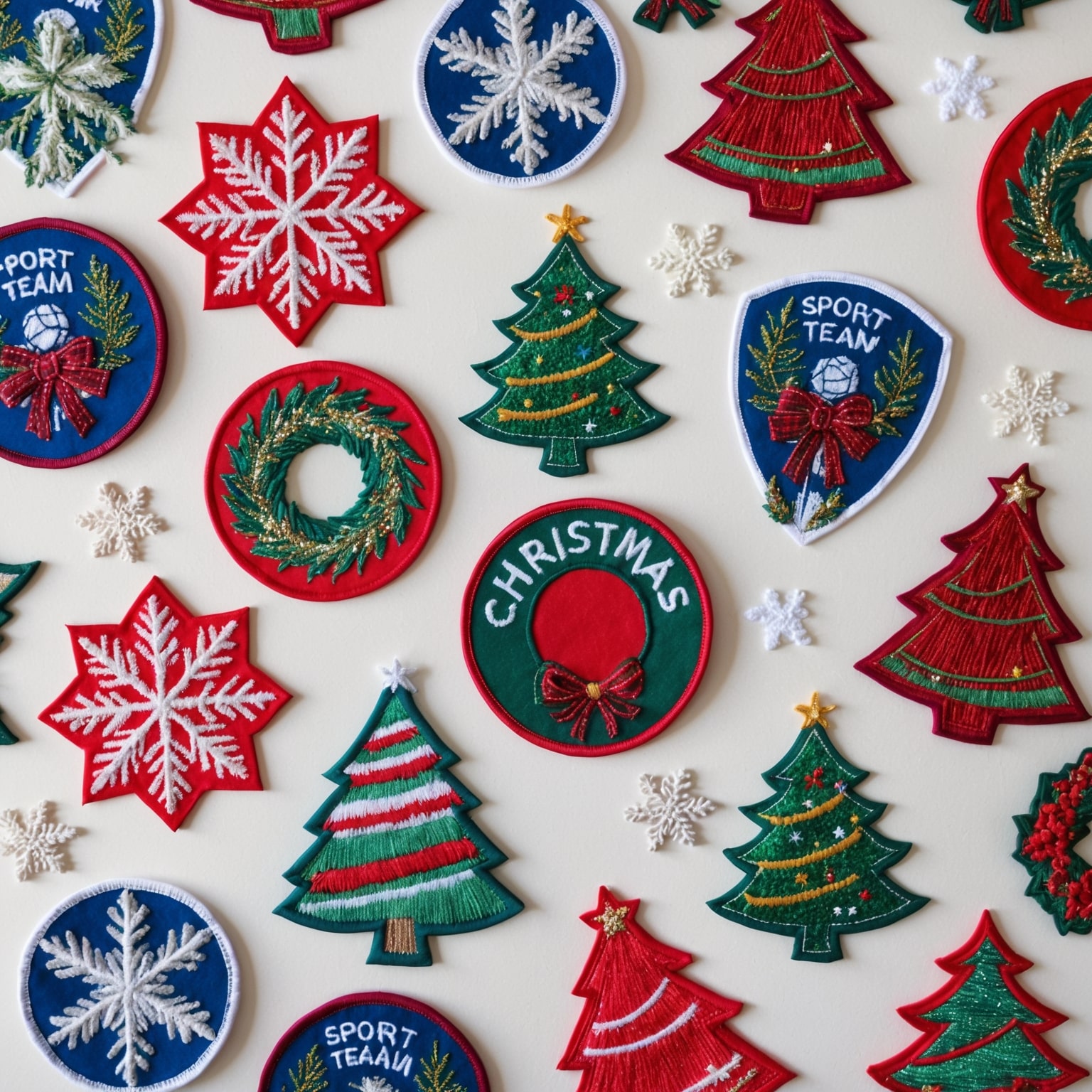In the world of law enforcement, symbolism and identity play crucial roles in fostering unity, pride, and morale among officers. One of the most visible and impactful symbols in this realm is the police department patch. These patches, often worn on uniforms and displayed on vehicles, serve as a badge of honor and a representation of the department’s values, mission, and history. Thoughtful and creative patch design can significantly boost morale within a police department, instilling a sense of pride and belonging among officers. This article explores the importance of patch design in law enforcement, the elements that make a great patch, and how these designs can positively impact police department morale.
Patches are more than just decorative elements on police uniforms; they are symbols that carry deep meaning and significance. For law enforcement officers, the patches they wear are a source of pride and a visual representation of their commitment to serve and protect. The design of these patches can influence how officers perceive their department, their role within the community, and their connection to their colleagues.
Thoughtful patch design goes beyond aesthetics; it reflects the identity and values of the police department. It can include elements that honor the department’s history, pay tribute to fallen officers, or highlight specific aspects of the community they serve. A well-designed patch can boost morale by fostering a sense of unity and pride among officers, reminding them of the importance of their work and the support of their community.
This article delves into the power of patch design in boosting police department morale. We will explore the elements of effective patch design, the significance of incorporating meaningful symbols, and the process of creating patches that resonate with officers and the community. Additionally, we will examine the psychological and emotional impact of wearing a patch that embodies the department’s values and mission. Through these discussions, we aim to highlight the role of patch design in enhancing the morale and cohesion of police departments.
1. The Historical and Symbolic Importance of Police Patches
The tradition of wearing patches on police uniforms dates back to the early days of organized law enforcement. These patches have served as identifiers, distinguishing officers from other public servants and representing the authority and responsibilities entrusted to them.
Historical Evolution of Police Patches
Police patches have evolved significantly over the years. In the early days, they were often simple and utilitarian, designed primarily for identification purposes. As law enforcement agencies grew and diversified, so did the complexity and symbolism of their patches. Departments began incorporating elements that reflected their unique identities, histories, and values.
For example, early police patches might have featured basic designs, such as a city’s name or a simple badge icon. Over time, these patches evolved to include more detailed imagery, such as state seals, cityscapes, and symbols of justice like scales or eagles. These additions not only made the patches more visually appealing but also imbued them with deeper meaning.
Symbolism in Patch Design
The symbolism in police patches is rich and varied, often reflecting the core values and mission of the department. Common symbols include shields, which represent protection and defense; scales, symbolizing justice and fairness; and stars, indicating rank or authority. Other elements might include local landmarks, state or national flags, and references to historical events or figures significant to the department’s history.
For example, a police department in a coastal city might feature a lighthouse on its patch, symbolizing guidance and safety. A department with a strong history of community engagement might include symbols representing diversity and unity. These symbols serve as visual reminders of the department’s mission and the values they uphold, reinforcing officers’ commitment to their duties.
The Role of Patches in Law Enforcement Identity
Patches play a crucial role in shaping the identity of a police department. They are a visible representation of the department’s ethos and serve as a point of pride for officers. Wearing a patch that embodies the department’s values and history can instill a sense of belonging and purpose, reinforcing the officer’s role as a protector and servant of the community.
Moreover, patches help differentiate departments and units within the broader law enforcement community. Special units, such as SWAT teams, K-9 units, or community policing divisions, often have their own unique patches. These patches highlight the specialized skills and missions of these units, fostering a sense of pride and camaraderie among their members.
2. Elements of Effective Patch Design
An effective police patch design is more than just aesthetically pleasing; it conveys important messages and embodies the values of the department. Several key elements contribute to creating a patch that resonates with officers and the community.
Visual Appeal and Clarity
The visual appeal of a patch is crucial, as it is often the first thing people notice. A well-designed patch should be visually striking, with a clear and legible design that can be easily recognized from a distance. The use of bold colors, distinct shapes, and clear lines can help achieve this clarity. The design should be balanced and harmonious, avoiding overcrowding with too many elements.
For instance, a patch with a simple, bold shield outline and a few carefully chosen symbols can be more impactful than a patch cluttered with numerous images and text. The goal is to create a design that is instantly recognizable and conveys the department’s identity at a glance.
Meaningful Symbols and Imagery
Symbols and imagery are essential components of an effective patch design. They convey the values, mission, and history of the department in a visual format. It’s important to choose symbols that are meaningful and resonate with both the officers and the community they serve.
For example, a police department that values transparency and fairness might incorporate symbols like scales of justice or an open book. A department known for its community engagement might include images representing unity and cooperation, such as interlocking hands or a group of diverse individuals.
The use of local landmarks or cultural symbols can also strengthen the connection between the department and the community. A patch that includes a recognizable cityscape, a local animal, or a historical reference can foster a sense of pride and connection among officers and residents alike.
Incorporating Text and Mottos
Text and mottos on a patch can provide additional context and reinforce the department’s values. The text should be concise and impactful, ensuring it is easily readable. Common elements include the department’s name, the city or state, and a motto or slogan.
For example, a police department might include a motto like “Protect and Serve” or “Justice and Integrity” on their patch. These mottos encapsulate the department’s mission and serve as a daily reminder to officers of their duties and responsibilities. The choice of font and placement of text are also important, as they can affect the overall balance and readability of the design.
Color Choice and Symbolism
Colors play a significant role in patch design, contributing to the visual appeal and symbolic meaning of the patch. Different colors can evoke different emotions and associations. For example, blue is often associated with law enforcement and can symbolize trust, authority, and calm. Red can signify courage and determination, while gold or yellow can represent honor and excellence.
It’s important to choose colors that complement each other and align with the department’s identity. The color scheme should be consistent with other elements of the department’s branding, such as uniforms and vehicles. Additionally, the use of color should enhance the legibility of the patch, ensuring that symbols and text stand out clearly against the background.
Customization for Special Units
Special units within a police department, such as SWAT, K-9, or traffic enforcement, often have their own unique patches. These specialized patches highlight the distinct roles and responsibilities of these units. Customization can include specific symbols, colors, and text that reflect the unit’s mission and identity.
For example, a K-9 unit patch might feature an image of a police dog, while a SWAT team patch could include tactical symbols like rifles or a shield. These patches not only differentiate the units but also foster a sense of pride and camaraderie among their members. They symbolize the specialized skills and training required for these roles and serve as a badge of honor for those who wear them.
3. The Process of Creating Thoughtful Patch Designs
Creating a thoughtful and impactful patch design involves a collaborative process that takes into account the perspectives and values of the department, the officers, and the community. This process includes several key steps, from conceptualization to final production.
Gathering Input and Inspiration
The first step in creating a patch design is gathering input from various stakeholders. This includes department leadership, officers, and potentially community members. Understanding the values, mission, and history of the department is crucial in creating a design that resonates with everyone involved.
During this stage, it’s also helpful to research existing patches from other departments and units. This can provide inspiration and help identify design elements that are effective and meaningful. However, it’s important to ensure that the design remains unique and reflective of the department’s specific identity.
Conceptualization and Sketching
Once the initial input is gathered, the next step is to conceptualize the design. This involves sketching out ideas and experimenting with different symbols, shapes, and layouts. The goal is to create a visual representation of the department’s identity and values.
During this phase, it’s important to consider how the design elements will work together. The symbols, text, and colors should complement each other and create a cohesive and balanced composition. The design should also be scalable, meaning it should look good and be recognizable whether it’s on a small shoulder patch or a larger vehicle decal.
Feedback and Refinement
After creating initial design concepts, it’s important to seek feedback from stakeholders. This can include department leadership, officers, and potentially members of the community. Feedback can help identify any elements that may need adjustment and ensure that the design aligns with the department’s identity and values.
Based on the feedback, the design can be refined and adjusted. This might involve tweaking the symbols, adjusting the color scheme, or refining the text. The goal is to create a final design that is visually appealing, meaningful, and representative of the department.
Finalization and Production
Once the design is finalized, the next step is production. This involves working with a manufacturer to produce the physical patches. It’s important to choose a manufacturer with experience in producing high-quality patches, as the final product should be durable and well-made.
During production, attention should be paid to details such as stitching quality, color accuracy, and the overall finish of the patch. The final product should be a true representation of the design, with clear symbols, legible text, and vibrant colors.
Distribution and Presentation
The final step in the process is distributing the patches to the officers. This can be done during a formal presentation, such as a department meeting or special ceremony. The presentation of the patches is an important moment, as it reinforces the significance of the design and the values it represents.
Officers should be encouraged to wear their patches with pride, as they symbolize their commitment to the department and the community. The presentation can also be an opportunity to highlight the meaning behind the design and the importance of the values it represents.
4. The Impact of Thoughtful Patch Design on Police Department Morale
The impact of thoughtful patch design on police department morale can be significant. A well-designed patch that resonates with officers and reflects the department’s values can foster a sense of pride, unity, and belonging.
Instilling Pride and Confidence
Wearing a well-designed patch can instill a sense of pride and confidence in officers. The patch serves as a symbol of their role and responsibilities, reminding them of the importance of their work and their commitment to serving the community. This pride can enhance job satisfaction and motivation, contributing to a positive work environment.
For example, an officer wearing a patch that honors the department’s history or pays tribute to fallen officers may feel a deeper connection to the department and a greater sense of purpose. This can translate into greater dedication and commitment to their duties.
Fostering Unity and Camaraderie
Patch design can also play a role in fostering unity and camaraderie among officers. When all members of the department wear the same patch, it creates a visual representation of their shared identity and mission. This can strengthen the bond between officers and create a sense of solidarity.
Additionally, specialized patches for specific units can foster camaraderie within those units. For example, members of a K-9 unit wearing their unique patch may feel a special connection to their fellow officers in the unit. This can enhance teamwork and collaboration, as officers feel a strong sense of loyalty and support for each other.
Enhancing Community Relations
The impact of thoughtful patch design extends beyond the department to the broader community. A well-designed patch that incorporates symbols and imagery meaningful to the community can enhance the department’s public image and strengthen community relations. When community members see officers wearing patches that reflect local culture or landmarks, it can foster a sense of connection and trust.
For example, a police department that includes a local landmark or a cultural symbol in their patch design may be seen as more approachable and connected to the community. This can improve public perception of the department and enhance cooperation between officers and residents.
Reinforcing Department Values and Mission
Finally, thoughtful patch design can reinforce the department’s values and mission. The symbols, text, and colors used in the design can serve as a daily reminder to officers of the principles they uphold and the responsibilities they carry. This can help maintain a focus on integrity, professionalism, and service.
For instance, a patch that includes the scales of justice or the department’s motto can remind officers of their commitment to fairness and justice. This constant reinforcement of values can contribute to a culture of accountability and excellence within the department.
Conclusion
Patch design plays a crucial role in shaping the identity and morale of police departments. Thoughtfully designed patches that incorporate meaningful symbols, text, and colors can instill pride, foster unity, and enhance community relations. These patches serve as powerful symbols of the department’s values and mission, reminding officers of their responsibilities and the importance of their work.
The process of creating a patch involves gathering input, conceptualizing designs, refining concepts, and producing high-quality patches. This collaborative process ensures that the final design resonates with both officers and the community, creating a sense of ownership and pride.
The impact of a well-designed patch extends beyond aesthetics. It contributes to a positive work environment, enhances job satisfaction, and fosters a strong sense of camaraderie among officers. Additionally, it can improve public perception of the department and strengthen relationships with the community.
As police departments continue to evolve and adapt to new challenges, the importance of thoughtful patch design will remain significant. These small but powerful symbols serve as a constant reminder of the department’s mission and the values that guide their work. In boosting morale and reinforcing a shared sense of purpose, patch design plays a vital role in supporting the well-being and effectiveness of law enforcement officers.
Another cool way to boost morale in the departments are through challenge coins, you can read more about that here.
If you are interested in purchasing high-quality custom patches, feel free to call us at 1-877-503-8485 or fill out one of our FREE quotes here.




